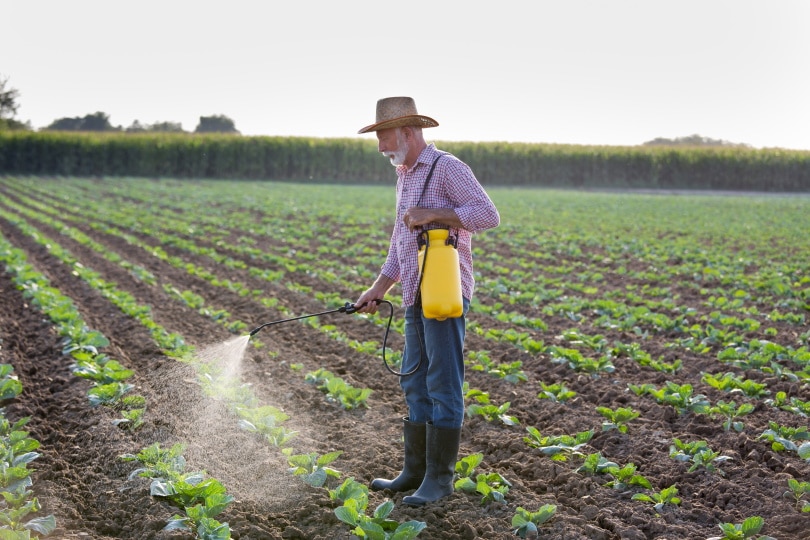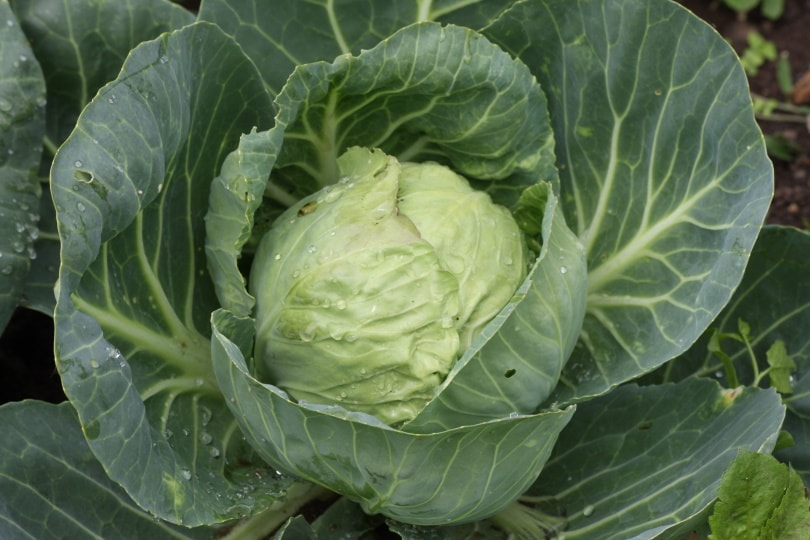How & When To Plant Cabbage: Varieties, Facts, & FAQ
-
Visnja Radosavljevic
- Last updated:

Cabbage is a cool-season, delicious, and nutritious vegetable that’s easy to grow. There are various cabbage types in different shapes, sizes, and flavors, and you can harvest them throughout the year. We’ve written this article to help everyone who wants to plant and grow cabbages but is unsure how to do that.
The trick is to provide cabbage with all the requirements to thrive, which we will cover below. Keep reading to learn more about cabbages’ planting, growing, and harvesting process.
Popular Cabbage Varieties
Once you decide to plant cabbage in your garden, it is time to pick out a variety that will suit your needs best. If you thought there were only red and green types, you would be astounded to learn the many different available cabbage varieties that you can plant.
Below, you can find a list of some of the most popular cabbage types that can soon find a spot in your garden.
- Charleston Wakefield: This dark green type of cabbage is very heat tolerant and grown in the US effortlessly. It takes about 70 to 80 days for this cabbage to mature, and it will grow strong and healthy if you provide them with enough sunlight and room to grow.
- Brunswick: Brunswick cabbage is an excellent type for all those garden lovers that live in the north. It is suitable for growing both in spring and fall, and it takes about 85 to 95 days to mature. Like other types of cabbage, it is crucial to provide this vegetable with enough room to spread and with direct sunlight.
- Golden Acre: Golden Acre is a unique type of cabbage because of its resistance to yellowing diseases. This type of cabbage generally does not spread as much as other types, so providing it with 15 inches of space will be sufficient. To grow a strong and healthy vegetable, make sure to give this cabbage a bit of fertilizer, such as organic compost.
- Bok Choy: Bok Choy is a dark and leafy type of Chinese cabbage. It is very simple to grow Bok Choi in the US, as it thrives in direct sunlight. You can sow this type of cabbage both in spring and late summer. This cabbage is prone to flea beetles that may chew on the leaves in the spring, creating small holes.
- Savoy Cabbage: Savoy cabbage is an interesting and unique-looking cabbage, with crinkled leaves and distinctive emerald color. It is easy to confuse with the green cabbage, although it is much sweeter and a bit more expensive than green cabbage. This type of cabbage is usually ready for harvesting after about 90 days.
- Mammoth Red Rock: This type of cabbage is popular mainly for its sweet, recognizable taste and deep red-purple colors. You can usually harvest this type of cabbage after 90–100 days. One way to know if you are unsure whether the cabbage is ready for harvesting is to check on the heads—if they feel solid, then it’s time to harvest.

When Should I Plant Cabbage?
The planting time will depend on when you want to harvest the cabbages, as their planting season is pretty long. They need anywhere from 60 to 100 days to become mature and harvest-ready.
Cabbages grow the best when their temperature requirements are met, as they prosper in temperatures between 45°F and 75°F, although they can briefly tolerate low temperatures at 20°F.
Typically, there are two different planting times:
- Spring planting: If you plant your cabbages in spring, they will be ready for a summer harvest. For spring planting, it’s best to start the seeds in early spring, possibly April, and we advise first to plant them indoors. After a couple of weeks, you will be able to transfer them outdoors.
- Summer planting: If you plant cabbages in summer, you’ll be able to harvest them in the fall. It’s best to plant cabbage in July to be ready for harvesting before the lower, freezing temperatures. Since the weather in July is hot, there’s no need for indoor planting, but you’ll need to provide the plants with enough water due to the possible extreme heat.

Growing Cabbage
Depending on your preferences, you can grow your cabbage in a garden or containers, and it is best to mix the soil with organic fertilizer, such as garden compost. When sowing cabbages, it’s best to place them 12 to 18 inches apart, depending on the variety you’re planting.
You will need to sow cabbages into a seedbed, and then you should transplant them later during the growing season. If you sow them in their final location, they will take up a lot of room early. Instead, it’s better to use the space for fast-maturing crops.
Once your cabbages have around five or six leaves, you can transplant them to the actual growing position. You’ll need to water them a day before and then set them into the new hole while placing the lowest leaves at the ground level. When transplanting, you should puddle the area with lots of water.
Cabbage Growing Requirements
To successfully grow and care for cabbages, you’ll need to meet specific requirements to help with their growth. Check out all the necessities that cabbage plants need to prosper below.
- Light: Cabbage will generally grow better in areas with enough sunlight provided. It is important to pick a perfect place to grow your cabbage, and an area that receives about 8 hours of direct sunlight would be ideal.
- Soil: Cabbages need well-drained, moist soil to provide them with their unique flavor without tasting bitter. They will grow best in soil with a pH level of 6.5 to 6.8.
- Water: Cabbages need moisture to prosper, and you should water them frequently, especially during a drought season. Typically, your cabbages will need around 1 inch of water weekly, but you mustn’t overwater them as they won’t tolerate soggy soil.
- Fertilizer: Cabbage needs nitrogen-rich fertilizers or compost that will enhance the quality of the final product. When you fertilize cabbage, you’re automatically improving its quality and texture, which means you’ll enjoy a tastier vegetable. You should apply fertilizer after the cabbage develops new leaves and begins to form heads.

When Should I Harvest My Cabbage?
Your cabbage will be harvest-ready in about 80 to 180 days after planting, depending on the variety. You should cut the firm cabbage heads just above the ground level.
Depending on the variety and the season of sowing, you’ll either harvest them before the temperatures in spring become warm or during colder fall/winter months. Most varieties will taste better if you harvest them during cold weather.
Common Cabbage Pests and Diseases
Like every other vegetable, cabbage is prone to specific diseases that could endanger the quality of your crops, so it’s vital to recognize them and prevent them. Some of the most common diseases are:
- Black rot
- Bacterial leaf spot
- Bacterial soft rot
- Clubroot
- Ring spot
- Powdery mildew
- White mold

Other than the diseases, certain pests can attack your cabbage plants. The most common ones are:
- Painted bug
- Diamondback moth
- Cabbage aphids
- Tobacco caterpillar
- Cabbage hear borer
- Cabbage leaf weber
Conclusion
Cabbage is tasty and nutritious, and it doesn’t require a lot of maintenance, making it the perfect vegetable for any gardener that wants a low-maintenance plant. By following all the growing details in the article, you’ll have stunning cabbage crops in a couple of months.
Featured Image Credit: Julio César García, Pixabay
Contents

